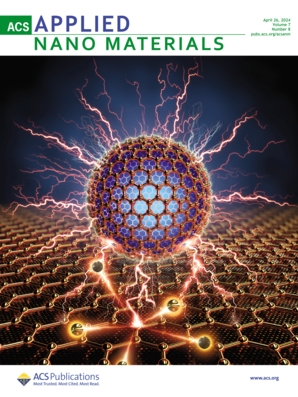PLA2R和THSD7A相关膜性肾病的临床特征和病理学:来自中国的一项单中心研究
IF 5.3
2区 材料科学
Q2 MATERIALS SCIENCE, MULTIDISCIPLINARY
引用次数: 0
摘要
目的:将血清特异性抗体作为一种无创手段,有效诊断特发性膜性肾病并评估临床病理。方法检测 IMN 和非 IMN(2020-2021 年)中抗 PLA2R 和 THSD7A 抗体的免疫荧光及肾组织 PLA2R、THSD7A 和 IgG4 的表达,以评估诊断 IMN 的疗效。将IMN患者分为抗PLA2R抗体阳性(161例)和阴性(26例)两组,肾组织PLA2R(40例)和PLA2R+THSD7A(6例)两组,比较临床和病理特征,并对THSD7A阳性患者进行预后分析,重点分析与恶性肿瘤的相关性。研究结果抗PLA2R抗体阳性率在IMN中明显升高(P<0.05);抗PLA2R抗体、肾组织PLA2R和IgG4以及THSD7A具有一定的诊断价值。抗PLA2R抗体与IMN患者的蛋白尿水平相关,其水平与血白蛋白呈负相关(r=-0.146,P=0.042);与病理分期、C3和IgG4免疫沉积相关;肾组织THSD7A+PLA2R阳性患者与肾组织PLA2R阳性患者在临床病理上无明显差异,但获得完全缓解的概率较低,时间较长,随访期间未发现恶性肿瘤事件。结论抗PLA2R抗体、肾组织PLA2R、THSD7A和IgG4对IMN具有较高的诊断效力;抗PLA2R抗体可作为诊断标记物,辅助评估临床和病理特征;肾组织PLA2R和THSD7A的共同表达在评估临床特征、病理表现和预后方面与肾组织PLA2R无显著差异,但需要长期随访。不过,需要长期随访以监测潜在风险,预计将开展更大规模的多中心研究并进行长期随访,以全面评估 IMN 的特征。本文章由计算机程序翻译,如有差异,请以英文原文为准。
Clinical Features and Pathology of PLA2R and THSD7A-Associated Membranous Nephropathy: A Single-Center Study from China
Objective: Serum-specific antibodies as a non-invasive means to effectively diagnose idiopathic membranous nephropathy and assess clinicopathology. Methods: Immunofluorescence of anti-PLA2R and THSD7A antibodies and kidney tissue PLA2R, THSD7A and IgG4 expression in IMN and non-IMN (2020–2021) was detected to assess the efficacy of diagnosing IMN. IMN patients were divided into two groups, anti-PLA2R antibody positive (161 cases) and negative (26 cases), and two groups, kidney tissue PLA2R (40 cases) and PLA2R +THSD7A (6 cases), to compare the clinical and pathological features, and to carry out a prognostic analysis of THSD7A-positive patients, with a focus on correlation with malignancy. Results: The positive rate of anti-PLA2R antibodies was significantly higher in IMN (P<0.05); anti-PLA2R antibodies, kidney tissue PLA2R and IgG4 and THSD7A had some diagnostic value. Anti-PLA2R antibodies correlated with proteinuria levels in IMN patients, and their levels were negatively correlated with blood albumin (r=−0.146, P=0.042); correlated with pathological stage and C3 and IgG4 immunodeposition; there was no significant difference in clinical pathology between kidney tissue THSD7A+PLA2R positive compared to kidney tissue PLA2R positive patients, but the probability of achieving complete remission was low and time longer, and no malignancy events were detected during follow-up. Conclusion: Anti-PLA2R antibodies, kidney tissue PLA2R, THSD7A and IgG4 have high diagnostic efficacy for IMN; anti-PLA2R antibodies can be used as diagnostic markers to assist in the assessment of clinical and pathological features; co-expression of kidney tissue PLA2R and THSD7A is not significantly different from kidney tissue PLA2R in assessing the clinical features, pathological manifestations and prognosis, but requires long-term. However, long-term follow-up is needed to monitor the potential risk, and a larger multicentre study with long-term follow-up is expected to be conducted to comprehensively assess IMN characteristics.
求助全文
通过发布文献求助,成功后即可免费获取论文全文。
去求助
来源期刊

ACS Applied Nano Materials
Multiple-
CiteScore
8.30
自引率
3.40%
发文量
1601
期刊介绍:
ACS Applied Nano Materials is an interdisciplinary journal publishing original research covering all aspects of engineering, chemistry, physics and biology relevant to applications of nanomaterials. The journal is devoted to reports of new and original experimental and theoretical research of an applied nature that integrate knowledge in the areas of materials, engineering, physics, bioscience, and chemistry into important applications of nanomaterials.
 求助内容:
求助内容: 应助结果提醒方式:
应助结果提醒方式:


